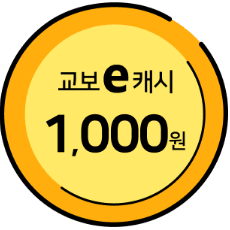학술논문
신발굴 자료 「⻄遊⽇記」 일고찰
이용수 2
- 영문명
- A Study on Newly Found Seoyuilgi
- 발행기관
- 영남대학교 민족문화연구소
- 저자명
- 양재성(Jae-sung Yang)
- 간행물 정보
- 『민족문화논총』제88집, 63~96쪽, 전체 34쪽
- 주제분류
- 인문학 > 역사학
- 파일형태
- 발행일자
- 2024.12.31
6,880원
구매일시로부터 72시간 이내에 다운로드 가능합니다.
이 학술논문 정보는 (주)교보문고와 각 발행기관 사이에 저작물 이용 계약이 체결된 것으로, 교보문고를 통해 제공되고 있습니다.

국문 초록
본고는 영남지역 유람기록 자료로 새롭게 발견된 자료인 「⻄遊日記」에 대한 소개와 그 특징에 대해 연구한 것이다. 한국한문학에서 ‘⻄遊’는 ‘서쪽지역을 유람한다.’는 의미에서 주로 松都(개경) 지역 유람을 의미하는 용어로 사용되어 왔다. 그러나 본고에서 살펴볼 「서유일기」는 이와는 다른 영남지역 중에서도 구미, 김천, 거창일대를 유람한 기록이다. 서유일기는 같은 표제의 두작품이 전하고 있는데, 洪載寬과 申在均이 각각 1904년과 1930에 지은 것이다. 이들 작품은 산수 유람을 유가의 입장에서 학문적 수양의 연속선상에서이루어졌다는 것은 동일하지만 서술 양상에 있어서는 각각 그들만의 특징적인 면모를 드러내고 있다.
홍재관의 「서유일기」는 유람을 통한 경관의 묘사와 함께 스승 및 당대 문인과의 교유를 통해 학문적 수양에 대한 의론을 펼치는 것이 주요 양상으로드러난다. 郭俛宇를 만나기 위해 다전으로 가는 길에서의 직접적인 경험을 통해 ‘下學上達’의 묘리를 깨우치게 된다. 또한 독서를 하는 방법과 지금 세상에서의 처세를 하는 방법에 대한 것을 밝히고 있다. 이와 같은 유람 중에 경험하고 느낀 감회 등은 의론을 강화시켜주고 있어 작품의 특색을 더욱 돋보이게한다. 나아가 당시 문인들과의 교유관계의 일단과 영남 유림의 학맥을 살펴볼 수 있다는 점에서 의미가 있는 작품이라 하겠다.
신재균의 「서유일기」는 유람지의 승경에 대해는 눈길 가는 곳마다 빠뜨리지않고 세밀히 살펴보며 생동감 있게 사실적으로 묘사하고, 단순히 유람으로만그치지 않고 일어난 감흥을 그 자리에서 즉시 시를 통해 표현하여 작품의 완성도를 높이고 있다. 또한 명승지 탐방을 주된 목적으로 하면서도 자신의 선조와관련된 선유의 유적지를 방문하여 그들의 발자취를 느끼고 先儒들의 風流를 답습하며 興趣를 표출하기도 하였다. 그 과정에서 때론 술에 흠뻑 취하기도 하고, 유람의 감회를 직접 시를 지어 읊조리기도 하면서 흥취를 만끽하고 있다. 이는산수 유람에 있어서 하나의 중요한 의미를 보여주고 있는 것이라 할 수 있다.
영문 초록
This study a ims to introduce Seoyuilgi, which is new material regarding sightseeing records about the Yeongnam region, and investigates its characteristics. In Korean literature, the Chinese character, Seoyu, has been used to imply sightseeing to Gaegyeong area since it means “going sightseeing to areas in the west.” However, through examination of the Seoyuilgi, this study suggests that the records imply going sightseeing in Gumi, Gimcheon, and Geochang in the Yeongnam region. There are two pieces of work with the same title, Seoyuilgi, and they were written by Hong Jae-gwan in 1904, and Mr. Shin of Pyeongsan in 1930, respectively. These two pieces a re the sa me in tha t sightseeing in mountains and rivers happened on an extension of academic learning in the Confucian standpoint, but they exhibit respective characteristics in description patterns.
Seoyuilgi, written by Hong Jae-gwan, has two major patterns, and they depict landscapes through sightseeing and unfolding discussions about academic learning through social interactions with his masters and contemporary literary figures. He realizes the exquisite principle of “Hahaksangdal” after having first-hand experiences on his way to Dajeon to meet Gwak Myeon-woo. He also talks about reading methods and how to get along in the current world. The emotions that he experienced and felt on this trip reinforce his discussions further, highlighting the distinct characteristics of his work. Moreover, his work offers a peek at an aspect of his social relationships with his contemporary literary figures and the academic genealogy of Confucian scholars in Yeongnam, thus holding its significance.
In his Seoyuilgi, Mr. Shin of Pyeongsan closely examines the beautiful sceneries of each tourist destination without omitting anything that his eyes capture and offers realistic descriptions about them with vitality. Instead of ending his experiences merely as sightseeing, he poetically expresses what he feels is right at that time and place ; thus, he increases the level of completion for his work. The ma in goa l of his trip is to visit scenic spots, but he a lso visits relics of previous Confucian scholars related to his ancestors. There he feels their traces and follows their taste for the arts, expressing his joy. In this process, he would get drunk heavily sometimes and write and recite poems about the emotions of sightseeing, immersing himself fully in excitement. This shows an important meaning of sightseeing in mountains and rivers.
목차
Ⅰ. 머리말
Ⅱ. 유람의 동기와 경위
Ⅲ. 유람의 서술양상과 특징
Ⅳ. 맺음말
키워드
해당간행물 수록 논문
참고문헌
교보eBook 첫 방문을 환영 합니다!

신규가입 혜택 지급이 완료 되었습니다.
바로 사용 가능한 교보e캐시 1,000원 (유효기간 7일)
지금 바로 교보eBook의 다양한 콘텐츠를 이용해 보세요!



